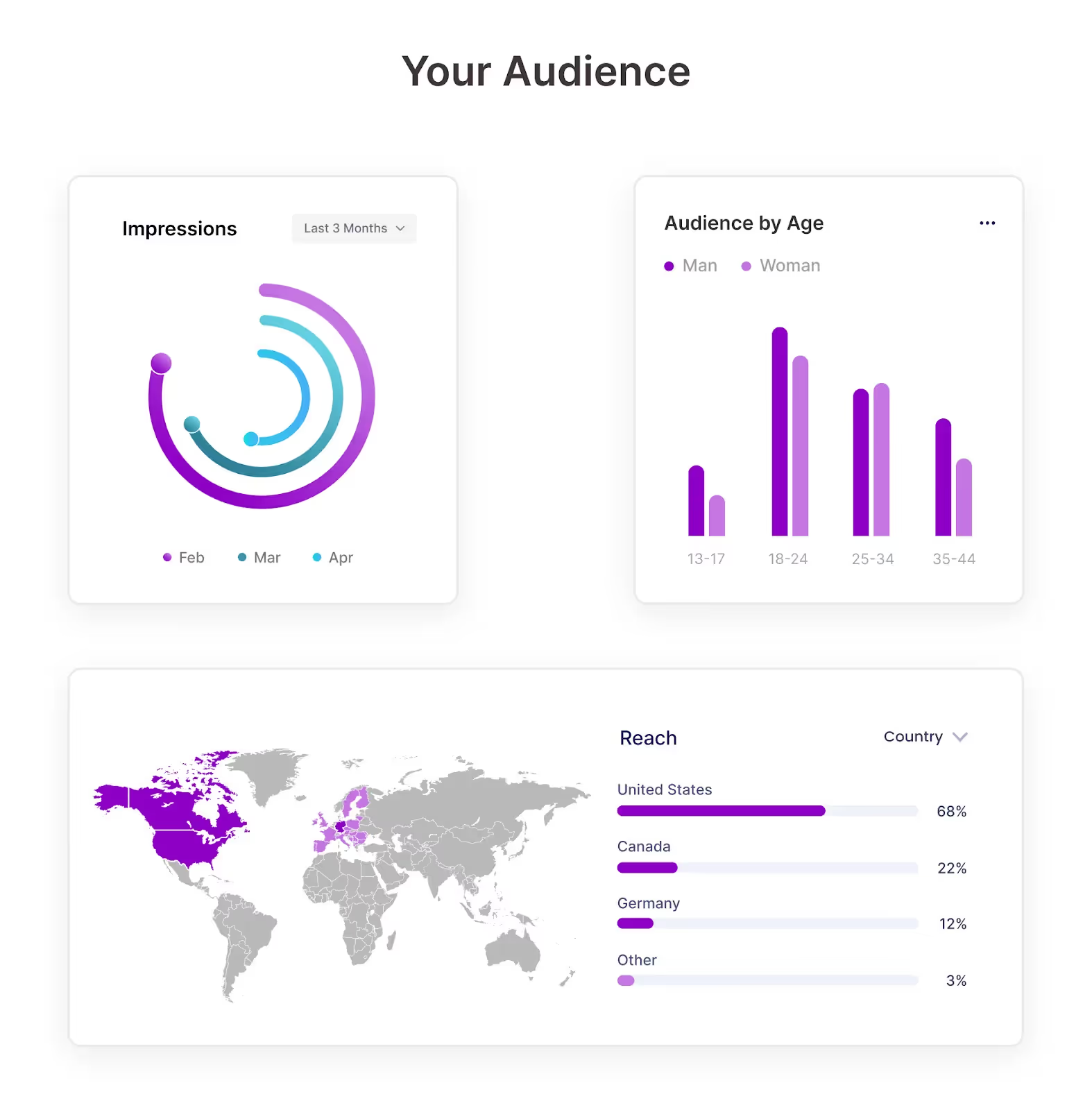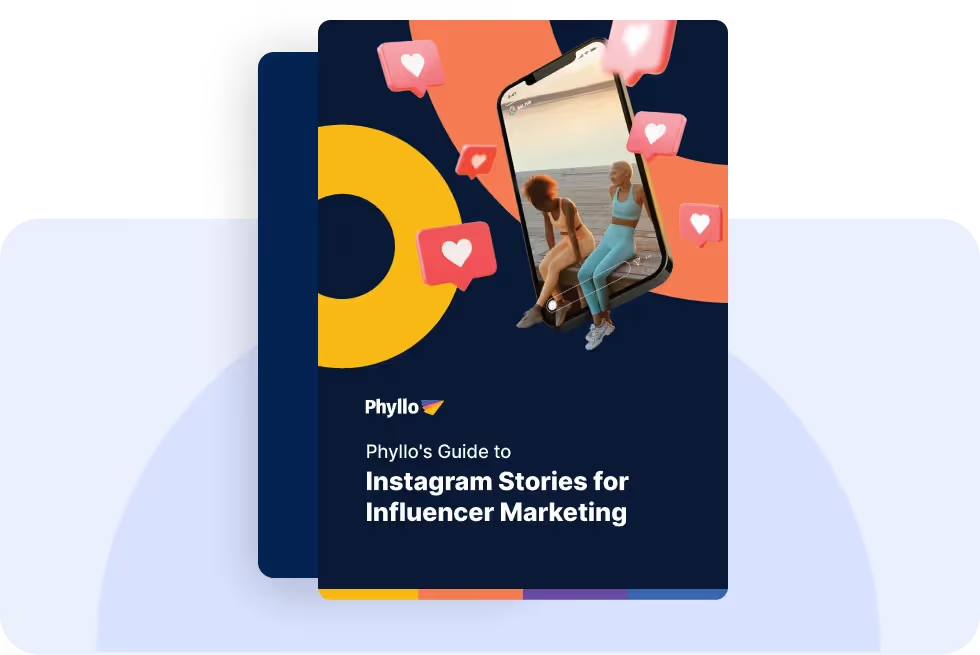Influencer marketing is all the rage.
You see a post in your social feed of an influencer promoting your competitor’s tool.
You read a case study about how collaboration with an influencer led to tremendous results.
You get recommendations from your peers to partner with influencers as they previously helped a brand gain 10x brand exposure.
Such instances make you invest all your chips in influencer marketing campaigns. But, any marketing campaign is useful only if you can measure influencer marketing ROI. Otherwise, you’ll be pouring money, time, and effort without real outcomes.
In this article, we will help you understand different metrics to calculate influencer marketing ROI and how to show results that’ll make you get desired funding from your stakeholders.
Importance of measuring influencer marketing ROI
With an increasing number of macro, micro, and even nano influencers, there is no denying that buzz to collaborate with them is higher than ever.
But, stakeholders demand ROI from such campaigns due to increased average spending on influencer marketing. For example, Statisa’s 2022 survey reveals that 39% of marketing agencies and brands spend 10-20% of their total budget on influencer marketing, while 5% of them more than 40% on such marketing activity.
Such spending on influencer marketing makes stakeholder demand justification due to these reasons -
- The impact of influencer campaigns isn’t direct or easy to measure. But, the stakeholder wants to know the numbers to approve the budgets.
- The stakeholder or finance departments see the money being poured into these campaigns, but the results aren’t immediate. This might cause them to view investing money in such campaigns as a waste.
Benefits of measuring influencer marketing campaigns

Knowing how to measure the ROI correctly from your influential marketing campaigns lead to huge benefits. Some of those include:
Analyzing the campaign's performance
By accurately measuring the ROI, you can determine whether or not the campaign was successful. This benefit is closely aligned with the goals you set for each campaign. If you analyze an influencer campaign's results in the right direction, you can double down on those campaigns.
If a campaign doesn't drive results, you can stop investing money as you would keep pouring money, and nothing substantial will come out of it.
Achieving better budget approvals
Your department head would be more inclined to approve the budgets if you show them the returns on your invested effort.
- Did you get the expected number of signups as you projected during your last call?
- Did you see the jump in traffic as you thought you would?
If you can show tangible results, chances of getting that required budget would become much easier.
Challenges of measuring influencer marketing ROI

Even though measuring the ROI is beneficial, it's also tricky to capture it accurately. Based on our research, these are some of the most common challenges while measuring the ROI of an influencer campaign.
1. Lack of pre-defined goal
Trying to measure the ROI without knowing the goal is going to a city without any guide. You might end up going anywhere and feel lost. The same happens when managers try to measure the ROI without knowing the campaign's goal.
- Did you run this campaign to increase brand awareness?
- Did you want to increase sales/leads?
- Did you want to increase social media engagement?
- Did you want to generate website traffic?
If you aren't clear about what you're trying to achieve by running this campaign, getting the right investment analysis will be even more challenging.
2. No clear way to attribute success
Attribution is still tricky. You can't assign a true value to the number of signups you get from a UTM link because the buyer's decision might be swayed by many factors — Factors that are not at all related to the influencer.
In such cases, giving the attribution to an influencer's campaign doesn't necessarily justify the returns on your investment.
3. Lack of data to analyze the results

If you're running campaigns on multiple platforms, aggregating the data and analyzing it is often tricky and overwhelming. Every social platform has its metrics tailored to that particular platform.
For instance, LinkedIn breaks down your audience, while no other platform does that. So, if you run a campaign on LinkedIn and Twitter, you will miss out on audience data from Twitter. How would you fill that? This can hinder the analysis and make it difficult to calculate the right ROI.
A step-by-step breakdown: Measuring the ROI of influencer campaigns
To measure the ROI accurately, you need to have two things clear: Goals and your expenses
1. The goal of your campaign
The first step is getting crystal clear with the goal you want to achieve. But goal setting is a skill, and you can’t assign generic, broader goals. That will make it even more difficult to measure the impact of your investment.
So, focus on getting as specific about your goal as you can. Some examples include:
- Increase revenue from the holiday campaign to $10,000.
- Get 1000 downloads for the e-book.
- Generate 10X product sales in Q1.
- Increase lead generation by 5X.
- Grow web traffic by 10X
2. The cost of running a campaign
- Out of the total budget, how much are you willing to pay an influencer?
- What’s the cost of the tools you use to measure the performance?
- If you’re running any paid ad campaigns, what’s that costing you?
Once these two are mapped out in your notes/sheets or any other tool, the only task (and the most difficult) is to decide on KPIs and metrics.
Related Read: Top 5 Influencer Marketing KPIs To Measure
3. Setting up the right KPIs and metrics to track
Your objectives/goals will help you determine the KPIs and, based on KPIs, decide the right metric to track.
How is Phyllo solving the challenges of Influencer Marketing ROI?
Being a platform API, Phyllo is here to make your life 10X easier. Not only do you get insights into the influencer, but also the audience they're attracting during the campaign.
Here are some of the use cases of Phyllo that'll help you measure the ROI of your campaigns:
1. Get insights into the influencer's audience
LinkedIn does a great job of summarizing the audience's data. That's one feature that makes it different from other social platforms.
But what if you're collaborating with Instagram or Youtube influencers? Insights into an influencer's audience is a goldmine and your ticket to impress your stakeholders.
Enter Phyllo's audience data API. By integrating with Phyllo's API, you can -
- Eliminate loads of manual work of accessing and curating your audience data
- Get data to which creators have given their consent
- Eliminate guesswork and get real-time data

Read Also: Audience API - Access audience demographics data
2. Analyze the comments on influencer campaigns
How would you extract comment data if your influencer post goes viral? There’s no doubt that this post is loaded with lots of leads that you can nurture.
With Phyllo’s comment API, you get all the details about the comment, including -
- The commented text,
- Publishing date
- Commenter’s username,
- Engagement level on a comment (likes, replies, etc.)

This feature is available for YouTube and Instagram but will soon roll out to other platforms.
Related Read: Maximize the ROI of Instagram Stories for Influencer Marketing
The way forward
When you’re finalizing the goals and strategy for your campaign involve influencers too. The influencer knows their audience more than you do, and they might pitch in a few effective ideas to achieve the goals.
To find the right influencer and decide which stage you want to include them, use Phyllo’s Identity API to collect as much information as you need. It will be easier for them to promote your brand and help you reach your goals if they feel involved.


.avif)







